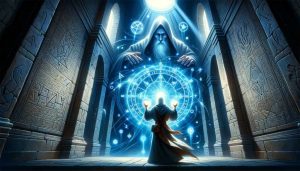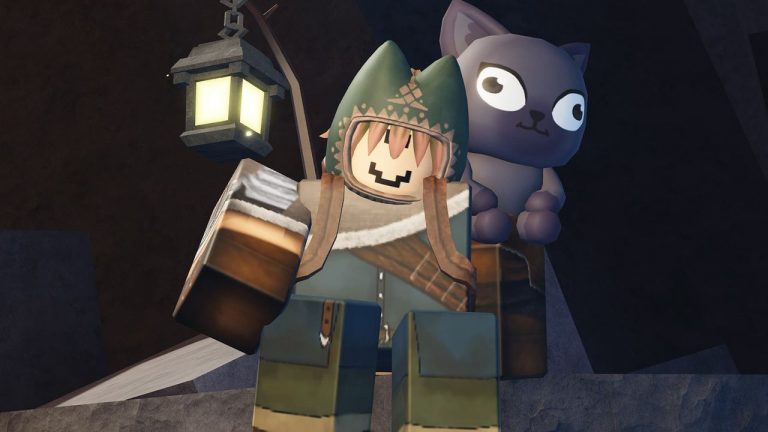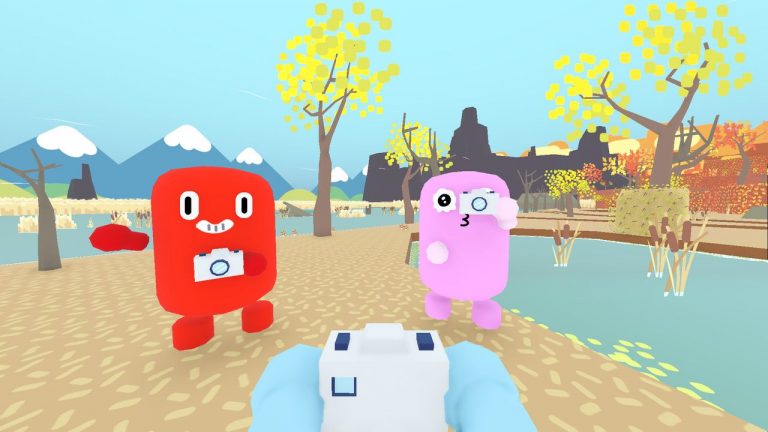The very essence of a Dungeons and Dragons adventure often lies in its challenges, be they mighty dragons, cunning rogues, or deadly traps. Traps, in particular, can transform a regular dungeon crawl into a nerve-wracking, edge-of-the-seat experience, where every step can spell doom or triumph. With the upcoming release of the DnD Book of Many Things, the boundaries of what we thought possible in trap design are being pushed even further.
Drawing inspiration from modern horror cinema, notably the Saw franchise, and merging it with the enigmatic allure of the Deck of Many Things, this book promises a thrilling concoction of danger and suspense. Let’s embark on a journey to explore the diabolical genius behind these new contraptions, guaranteed to test the mettle of adventurers across the realms.
The Cinematic Terrors
How Saw Carves Its Mark on RPG Traps
Modern storytelling, particularly in film, has a way of echoing through all forms of media. When it comes to the visceral, psychological horror, few franchises have left as indelible a mark as Saw. With its ingeniously sinister traps and the haunting puppetry of Jigsaw, Saw became the epitome of raw horror, challenging audiences’ nerves and stomachs in equal measure.
This cinematic influence has cascaded down to the world of role-playing games, especially in Dungeons and Dragons. Game designers, inspired by the diabolical intricacies of Jigsaw’s devices, began crafting challenges that not only test a player’s stats and rolls but also their wit, decision-making, and moral compass. These aren’t mere pits or swinging blades; they’re psychological gauntlets where choices can be as tormenting as the physical dangers. The modern trap, shaped in part by Saw’s legacy, invites deeper role-play, pushes narrative boundaries, and makes sure that tension is always razor-sharp.
Fate’s Cruel Hand
The Deck of Many Things and Its Labyrinthine Offspring
Few items in the Dungeons & Dragons universe capture the unpredictable spirit of tabletop role-playing quite like the Deck of Many Things. This notorious artifact, filled with a multitude of magical cards, is a tantalizing gamble, each draw bringing potential unparalleled boons or catastrophic misfortunes. It is a physical embodiment of chance, the very essence of D&D where a single dice roll can herald victory or doom.
The Book of Many Things harnesses this unpredictable energy in its trap designs. Rather than just presenting physical obstacles, these traps draw from the themes and consequences tied to the Deck’s cards. Each room embodies the potential rewards and perils of the Deck, challenging players to navigate both the tangible hazards and the psychological ramifications of their choices.
For instance, the ‘Balance and Ruin’ trap, inspired by the cards of the same names, doesn’t merely test a character’s agility but also their decision-making and morals. In essence, the traps in this book extend the Deck’s ethos: every choice carries weight, every action a potential ripple in the story’s fabric. Just as the Deck can alter the trajectory of an entire campaign, so too can these traps shape the narrative arcs and fates of the characters who dare to engage with them.
Taking the Plunge
A Comprehensive Exploration of The Book of Many Things’ Traps
The essence of a memorable Dungeons & Dragons campaign often lies in its ability to surprise, challenge, and engage its players. A well-crafted trap can epitomize all three. The Book of Many Things, Wizards of the Coast’s latest offering, brings forward a series of traps that are not only mechanically intricate but also deeply thematic, pulling inspiration from the enigmatic Deck of Many Things. Let’s delve deeper into these cunning contraptions and unearth their secrets.
Balance and Ruin
A name that signifies both equilibrium and devastation, this trap is a testament to the unpredictability of adventure. At its core, Balance and Ruin is a chamber spanning 50 feet in width with a perilously narrow beam stretching over a pit 25 feet deep. Within this pit lies the trap’s gruesome threat: relentless metal gears that churn endlessly. They are stained with the evidence of previous victims, hinting at the cruel fate that awaits any who stumble.
The inspiration for this trap might draw parallels with several real-world and cinematic scenarios. The narrow beam evokes the classic challenge of walking the plank, while the grinding gears are reminiscent of industrial hazards. But cinematically, the chamber brings to mind the perilous game rooms from movies like Saw, where the environment itself is the adversary, waiting to ensnare those who make a single misstep.
For Dungeon Masters looking to incorporate Balance and Ruin into their campaigns, there are a few considerations to keep in mind. First, the trap’s deadly nature means it’s best suited for players who are comfortable with high-stakes scenarios and potentially graphic outcomes. Secondly, DMs should be ready to offer clues or alternative solutions to observant players; perhaps the gears have a hidden off-switch or a rogue might spot weak points in the metal sheeting. Lastly, while the physical challenge is evident, introducing moral or ethical dilemmas can heighten the tension. Maybe there’s a mechanism that can make crossing easier, but at a terrible cost to an innocent. Remember, the best traps challenge both the mind and the reflexes.
The Surface of the Sun
Imagine a room that seemingly pulsates with the intense heat of a celestial body. The Surface of the Sun isn’t just a name; it’s an apt description of the environment adventurers find themselves in. The room’s dominant feature is its ceiling, which emanates a searing light, reminiscent of being trapped under the intense gaze of the sun. The primary task seems straightforward enough: use an oversized key to unlock a skull door. However, the twist is the urgency. As time ticks by, the radiant heat from the ceiling intensifies, dealing progressive damage to those within.
In the landscape of D&D traps, The Surface of the Sun finds itself somewhere between the mechanical and environmental threats. It is reminiscent of timed escape rooms or scenarios where players are under constant threat, like being inside a flooding chamber or a room filling with poisonous gas. The cinematic parallel here might be the furnace trap from Saw 2, a deadly predicament that also plays with the theme of heat and urgency.
For DMs who wish to alter or scale the difficulty, several adjustments can be made. Perhaps there are protective artifacts within the room that can shield players from the radiant heat, but they need to be found and activated. Another layer of challenge might be illusory walls or doors, forcing players to determine the real exit amidst the heat. Or, to heighten the tension, introduce a moral dilemma—maybe there’s only one protective suit, forcing the party to decide who gets it.
Test of the Empty Moon
This trap is a breath of fresh air, especially for those who might still be reeling from the deadly challenges of the previous rooms. The Test of the Empty Moon is a testament to the fact that not all challenges in D&D have to be about brute force or enduring mortal danger. Designed for adventurers of levels one to four, this trap is more cerebral, challenging players to rely on their intelligence and combat prowess rather than facing immediate mortal peril.
While many traps focus on the potential for damage or death, the Test of the Empty Moon places an emphasis on problem-solving. It’s reminiscent of classic puzzle rooms, perhaps a labyrinth or a series of levers and switches that need to be activated in a particular sequence.
For Dungeon Masters wanting to up the ante, there are multiple avenues to explore. Introducing timed elements can add urgency to the puzzle-solving. Misleading clues or decoys can test the party’s discernment and observation skills. And for those who want to introduce a combat element, perhaps the room is guarded by a creature that’s more of a nuisance than a genuine threat, serving as a distraction while players attempt to solve the primary challenge. Remember, the aim here is to challenge the players’ wits, not necessarily their hit points.
Conclusion
A Labyrinth of Modern Challenges
As we traverse through the pages of the Book of Many Things, it becomes evident how modern media, particularly the harrowing tales from franchises like Saw, have permeated the minds of game designers. These trap rooms, from the bone-crushing gears of “Balance and Ruin” to the intellect-testing maze of “Test of the Empty Moon,” showcase the evolution of challenges in role-playing. They not only test the mettle of our in-game characters but also the creativity and adaptability of players and Dungeon Masters alike.
In the end, it’s not just about surviving the traps but also about the stories that emerge from these experiences. The close calls, the ingenious solutions, and the moments of camaraderie forged in the face of danger. As with every D&D adventure, it’s the journey, the challenges, and the shared tales that become legends at the tabletop, making the Book of Many Things a treasure trove of memories waiting to be unearthed.
The post DnD Book of Many Things: A Deep Dive into Traps appeared first on LitRPG Reads.












